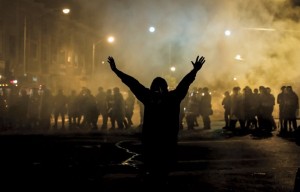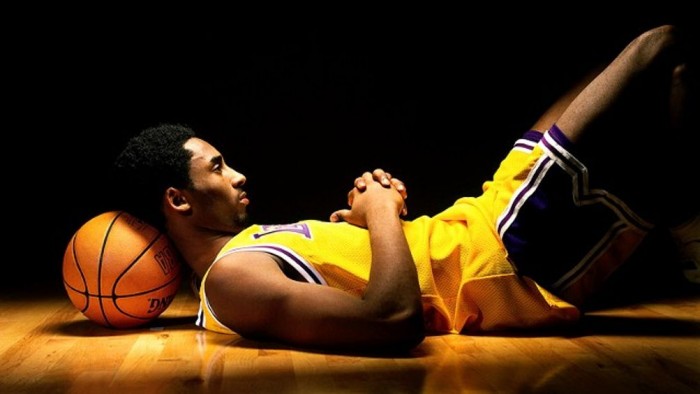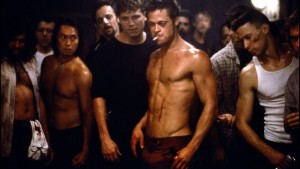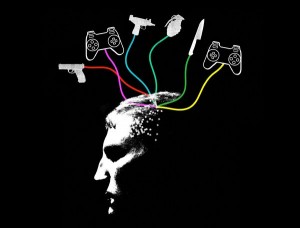
“So, what’s your major?” I get this question often despite having just started my freshman year at Wake Forest. Whether it’s a dinner with my extended family or a grocery store run-in with my parents’ friends, the question somehow pops up. After being asked several times, I crafted a standard response: “I’m not sure yet, but I’m thinking something in the humanities, maybe English.” This response has been met with everything from enthusiasm to surprise to blatant distaste, the “Wow… very cool!” to the sarcastic “I hear that’s where the money is!” Relatives are often bewildered that with the price of a college education, I want to pursue such an “impractical” course of study. Although justifying my choice so frequently can be irritating, I understand people’s skepticism. With a tuition exceeding $60,000 per year, it’s hard not to look at my education through a cost-benefit lens and to question its real world value.
Because of the perceived impracticality of a liberal arts degree, some feel that the liberal arts are only for the wealthiest students, those who do not have to worry about securing a job when they graduate. Although a liberal arts education has historically been accessible to only a small sliver of society, students of all socioeconomic classes can derive the same benefit from an education in the humanities. Unfortunately, with skyrocketing college tuitions and greater emphasis on the liberal arts in high schools that can afford to do so, studying the liberal arts is far more feasible for economically advantaged students than it is for their less privileged peers. In order to close this gap, we must address how to improve access, affordability, and the quality of the information on the benefits of a liberal arts education. We must market liberal arts degrees as valuable both to the degree-holder and to our society at large.
Before evaluating the accessibility and benefits of a liberal arts education, it is important to establish what the liberal arts are. For many of us, the liberal arts call to mind “the humanities,” an education in a wide array of subject matters, or perhaps the cultivation of a well-rounded individual. All of these definitions are a part of the liberal arts education. In his essay, “Why the Liberal Arts Still Matter,” American writer and scholar Michael Lind suggests that “the tradition of liberal education in Europe and the Americas is a synthesis of several elements: nonspecialized general education; an emphasis on a particular set of scholarly disciplines, the humanities; and acquaintance with a canon of classics” (Lind, 52). Thus, a liberal arts education is a broad education in the humanities with an emphasis on the study of certain classic texts.
Who Studies the Liberal Arts?
Having attended a boarding school with students from a wide variety of socioeconomic backgrounds, I observed the effect that my classmates’ economic statuses had on what they chose to study in college. While the majority of my classmates from wealthy families with parents who attended top universities tended to choose history or classics, most of my less advantaged classmates opted to pursue degrees in business or STEM fields. Although neither path is inherently better than the other, I couldn’t help but wonder if we were making our own choices about what to study or if socioeconomics and parental guidance were playing a larger role than our own interests were.
My good friend Electra comes from a wealthy New York City family. Her father works in finance and her mother works in the art industry. Her parents met at a small liberal arts college in Connecticut. Electra grew up attending art exhibitions with her mother. She plans to study art history at a small liberal arts college in upstate New York. In high school, her parents encouraged her to “follow her dreams” and “find her passion” rather than worrying about money. On the other end of the spectrum, my friend Emilio, also from New York City, comes from a working class family. Both of his parents are immigrants from Paraguay. His parents encouraged him to “study hard” and “get good grades” in high school so that he could attend college and secure a stable job upon graduation. He plans on studying business at a large public university. The majority of my classmates followed this trend. The “Electras” flocked to the liberal arts, while the “Emilios” gravitated toward STEM majors and business.
This polarization in my classmates’ courses of study can be attributed to two main factors: affordability and upbringing. For wealthy students, cost is not a factor. They do not have to worry about paying off student loans and they may have family money or connections in a particular industry to fall back on. Less privileged students lack this safety net and must assess, based on the information available to them, what major will provide job security post-graduation. The issue of exposure to the liberal arts is closely linked to socioeconomic status. In his aptly named Atlantic article, “Rich Kids Study English,” Joe Pinsker suggests that “there is…a possibility that children from higher-income families [are] more exposed to the sorts of art, music, and literature that colleges deem worthy of study, an exposure that might inspire them to pursue those subjects when they get to college” (Pinsker). Perhaps parents who have been fortunate enough to experience the value of a liberal arts education for themselves are more likely to instill a love of literature or history in their own children. Maybe they raise their children in areas with good school systems in which there is enough funding to focus on the humanities in addition to the science and math courses that our government and education system recommend. This earlier familiarization with the humanities undoubtedly makes a liberal arts education more easily accessible for wealthy students.
The Value of a Liberal Arts Education
In order to improve accessibility, the rhetoric around the cost of a liberal arts education, by policymakers and commentators, needs to change. Just recently, on a trip to Wisconsin, President Obama remarked, “folks can make a lot more, with skilled manufacturing or the trades than they might with an art history degree” (Postrel). Although his comment was intended to assure young people that college is not the only path to success, it still diminishes the money-making potential of liberal arts graduates in the eyes of a public that is evermore money-minded. Carol Gary Schneider, the president of the Association of American Colleges and Universities, conducted a study to disprove the “comments made by ill-informed commentators and policymakers who paint a misleading picture of the value of a liberal arts education” (Johnson). The study found that “college graduates in all fields see their salaries increase significantly over time” and that in general, college graduates, no matter their major, earn much more money than non-graduates do (Johnson). The study also addressed the common misconception that graduating liberal arts majors are unemployable and bound to end up moving back in with mom and dad. According to AAC&U, “the unemployment rate for recent liberal arts graduates is 5.2 percent” and for mature workers with liberal arts degrees (41-50) [it is] 3.5 percent- just .04 percent higher than the rates for those with a professional or preprofessional degree” (Johnson). Contrary to misinformation disseminated by politicians and journalists, liberal arts majors are getting jobs out of college and continuing to be employable into their peak work years. A liberal arts education prepares students for a changing world by equipping them with a broad set of analytical skills rather than a single focus. According to Peter Cappelli, the George W. Taylor Professor of Management at the University of Pennsylvania’s Wharton School, “nobody can predict where the jobs will be—not the employers, not the schools, not the government officials who are making such loud calls for vocational training. The economy is simply too fickle to guess way ahead of time, and any number of other changes could roil things as well” (Capelli). The broad knowledge and analytical skills that a liberal arts education provide ensure that students can adapt to these changes and apply their broad skill sets to a variety of careers.
In addition to preparing students to assume positions in various industries rather than just one, a liberal arts education is valuable to our society at large in that it develops citizens with the broad knowledge necessary for civic engagement. Michael Lind, a prominent American writer and scholar at the Woodrow Wilson International Center for Scholars states that “the argument for liberal education, from Isocrates and Cicero onward, has been that the leaders of society, even if they practice one or another profession, need to be well-rounded, well-informed generalists if they are to make sound decisions in public and private life” (Lind, 58). A liberal arts education, earlier referred to as a “gentleman’s education,” for giving students the broad knowledge and skills necessary for civic engagement. A man well-versed in rhetoric, history, literature, and politics could contribute to his government and society effectively. According to the aforementioned study by the AAC&U, “liberal arts graduates disproportionately pursue social services professions” (Johnson); although these professions may be less lucrative, they play necessary roles in communities. Social workers, counselors, and psychologists make critical contributions to healthcare, education, and the general welfare of our population. Other common professions for liberal arts graduates, like teaching and non-profit administration, can impact communities directly and profoundly. By improving access to the liberal arts, we can ensure that all students, regardless of socioeconomic status, have the opportunity to pursue careers that have such a deep-seated impact on their communities.
Improving Access
In his Forbes piece “Liberal Arts vs. STEM: The Right Degrees, the Wrong Debate,” Sergei Klebnikov, a former classmate of mine and a history and international relations major at Scotland’s University of St. Andrews, argues that we must not see the liberal arts and STEM as mutually exclusive. He addresses the collaborations occurring between the liberal arts and STEM fields at universities and suggests that we stop focusing on the differences between the two and start focusing on how we can integrate them. Although integrated curriculums would undoubtedly help introduce the liberal arts to students without much background in it, we must first address the gap in accessibility. Klebnikov mentions institutions like Lafayette College, a private liberal arts institution that includes a liberal arts requirement for its engineers; however, the real issue lies in the reality that few students can afford to attend Lafayette. If engineering colleges can infuse the liberal arts into their curriculums and liberal arts college, we can close some of this gap. If we can ensure that high school students are educated as to the actual benefits and drawbacks of the liberal arts versus other more “practical” degrees, we can deemphasize upbringing as a factor. Finally, and most challengingly, if colleges take steps to make education affordable, students will be able to base their decisions on what to study on personal interests rather than cost.
In “Rich Kids Study English,” Joe Pinsker argues that upon close inspection, “college majors and occupations start to look more and more like easily-interpreted, if slightly crude, badges doled out to people based on the wealth and educational status of the parents they were born to” (Pinsker). Obviously, this is a simplified and dramatized interpretation of the correlation between socioeconomic factors and college majors; however, in many cases it holds true. In order to make college majors and occupations reflections of young people’s own interests, we must eliminate their parents’ wealth and educational status as factors in their choice.
As a student who is fortunate enough to have received a strong foundation in the humanities in high school and to have the opportunity to study liberal arts in college, I can personally attest to the merit in a liberal arts education. As a nineteen-year-old, I don’t feel prepared to choose one track and stick to it. I am not yet ready to define myself label myself as “engineer” or “accountant.” Although some students my age my be ready to start down a path and stick with it, for those who aren’t, a liberal arts education can be a means of exploring a variety of subjects and eventually specializing in something of significance and interest to them. In addition to allowing me time before choosing a career path, a liberal arts education has allowed me to develop an understanding of myriad subjects: I can hold my own in conversations with adults on topics ranging from World War II history to F. Scott Fitzgerald. When I think about a career path, I see endless options. I have room to explore and to try things and fail. I am grateful for the opportunity that a liberal arts education affords me and hope that institutions, parents, educators, and people can work to open the door to liberal arts to all students. Perhaps liberal arts majors, with their analytical skills, multifaceted worldviews, and understanding of the privileged position that they are in, can collaborate in order to improve the quality of information about the liberal arts and the accessibility of liberal arts degrees for all students, regardless of socioeconomic status.
Works Cited
Capelli, Peter. “Why Focusing Too Narrowly in College Could Backfire.” The Wall Street Journal 15 Nov. 2013. Web 27 Oct 2015.
Johnson, Carrie. “New Report Documents That Liberal Arts Disciplines Prepare Graduates for Long-Term Professional Success.” Association of American Colleges and Universities. Web 22 Jan. 2014.
Klebnikov, Sergei. “Liberal Arts vs. STEM: The Right Degrees, the Wrong Debate.” Forbes 19 Jun. 2015. Web Thur 28 Oct 2015.
Lind, Michael. “Why the Liberal Arts Still Matter.” The Wilson Quarterly. Autumn (2006): 52-58. Print.
Pinsker, Joe. “Rich Kids Study English.” The Atlantic 6 Jul. 2015. Web 27 Oct 2015.
Postrel, Virginia. “Obama Fails Art History and Economics.” Bloomberg View. Web 31 Jan. 2014.










